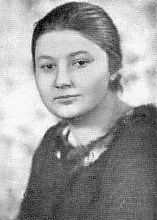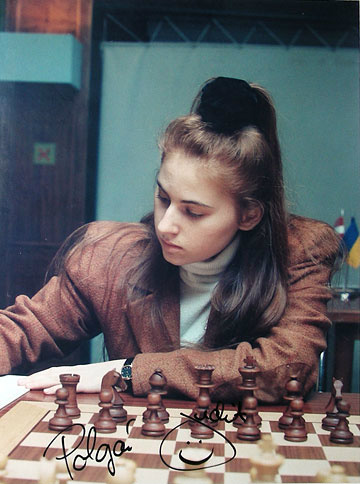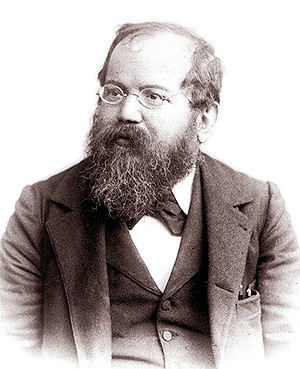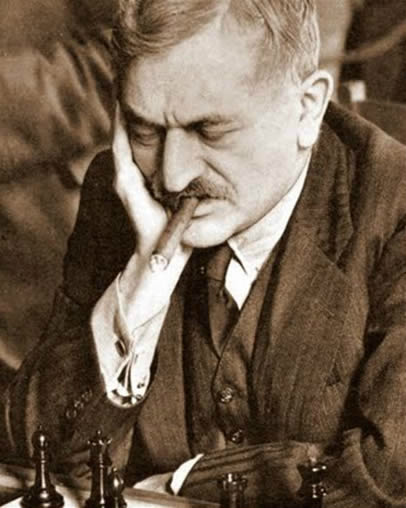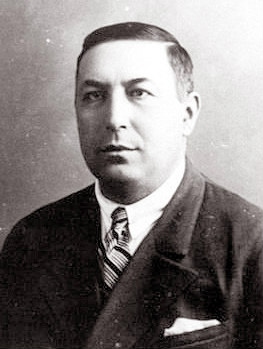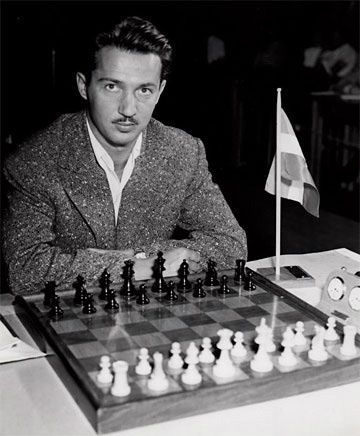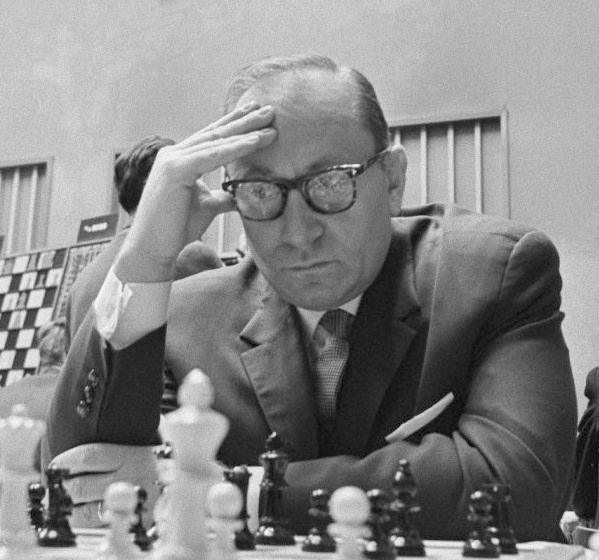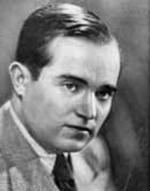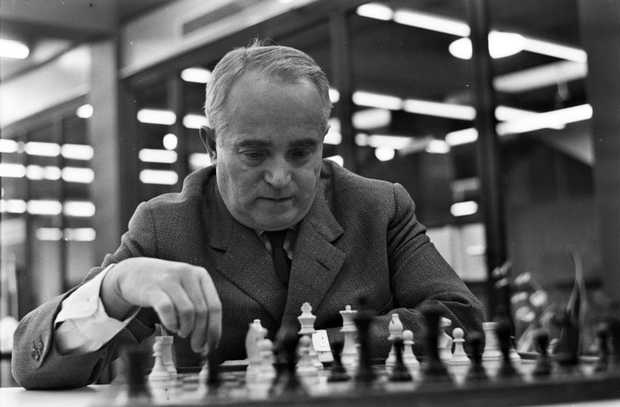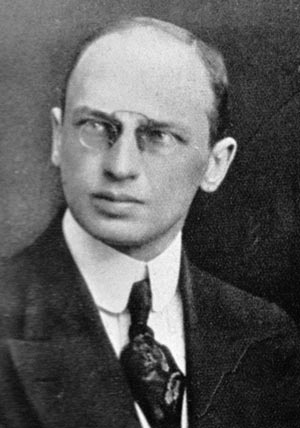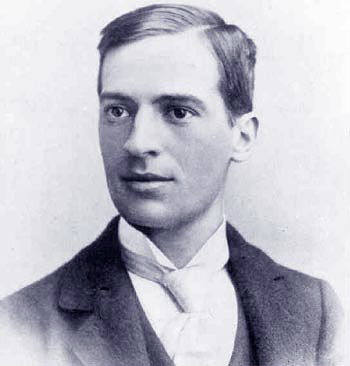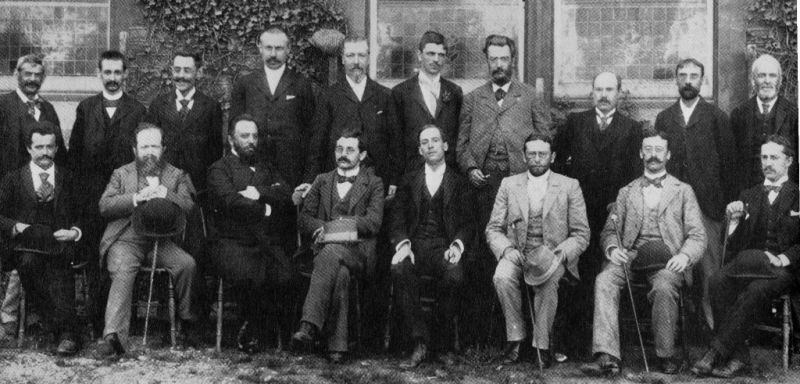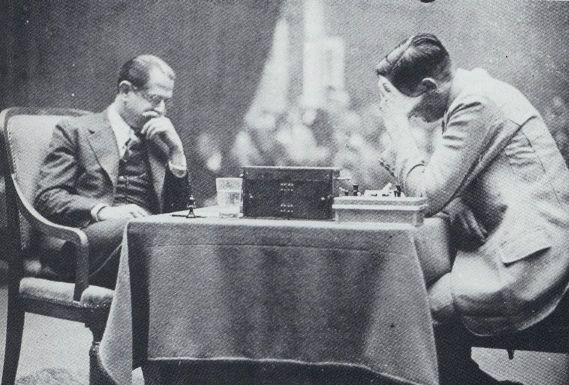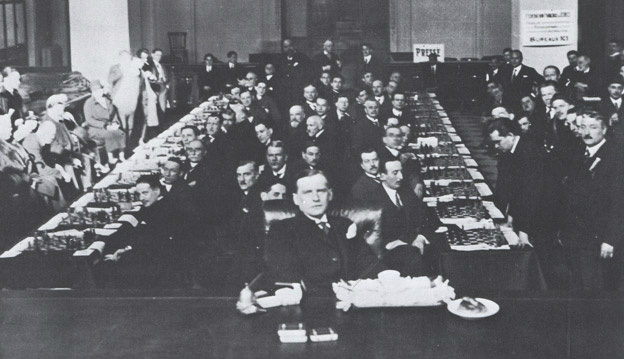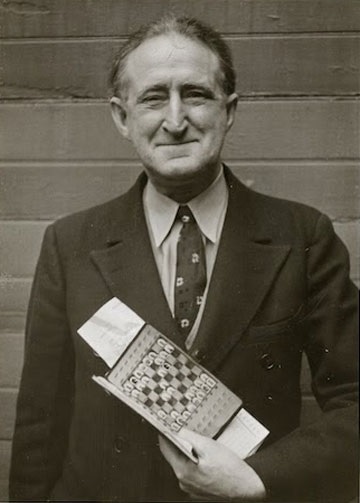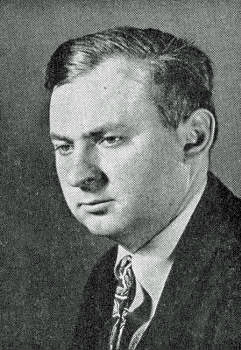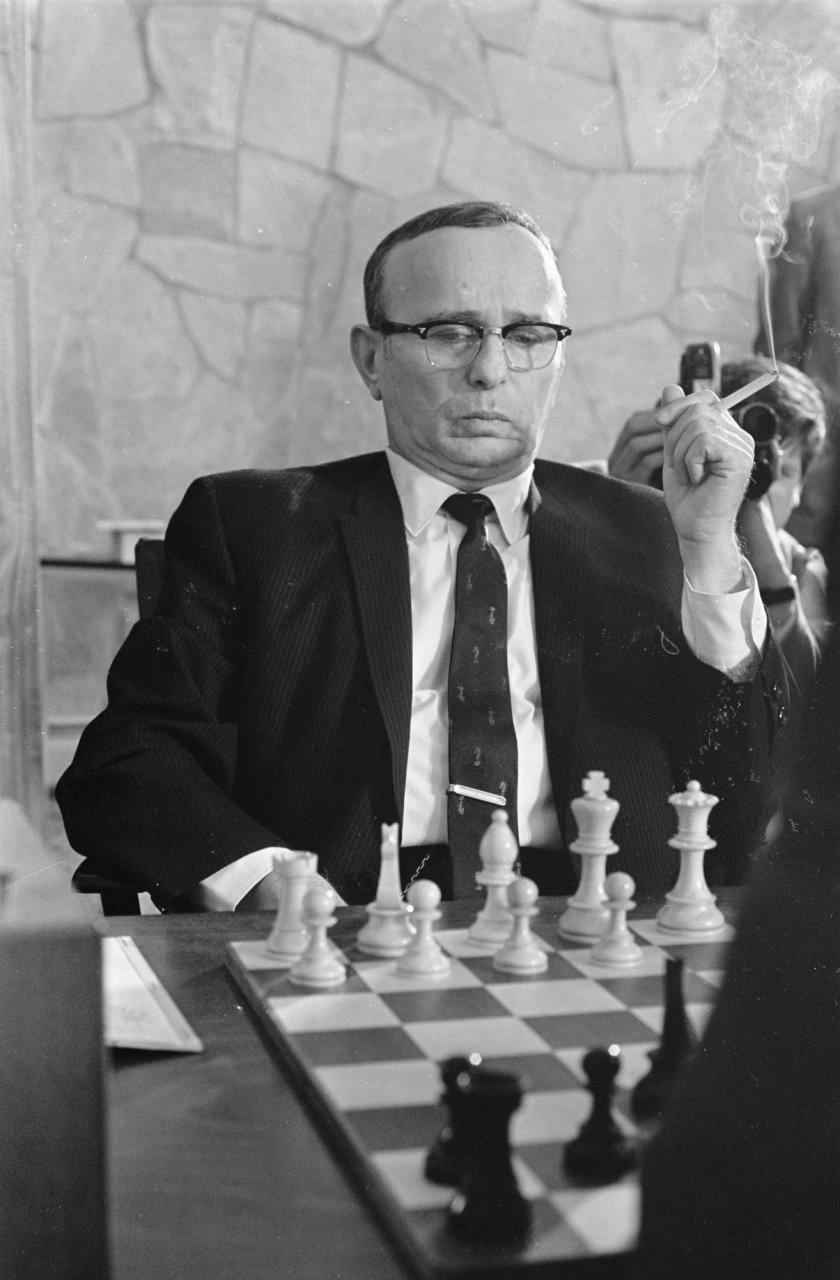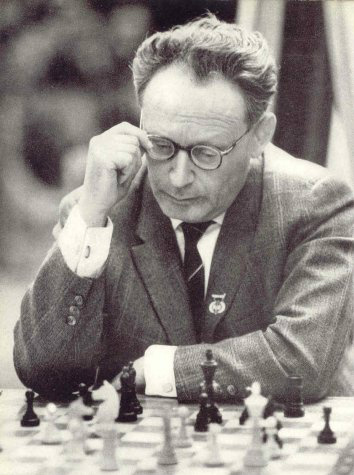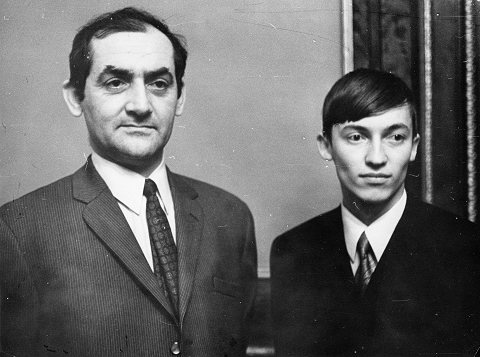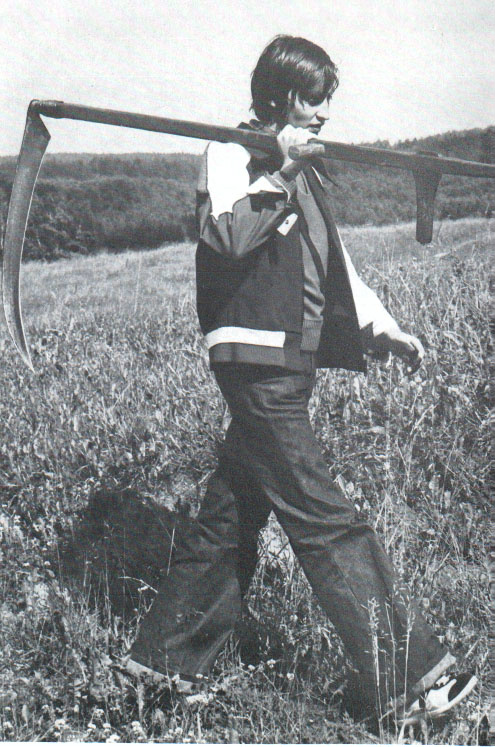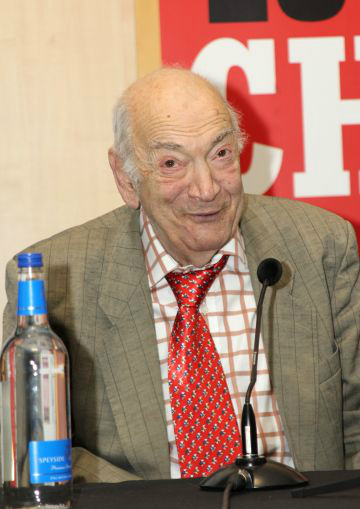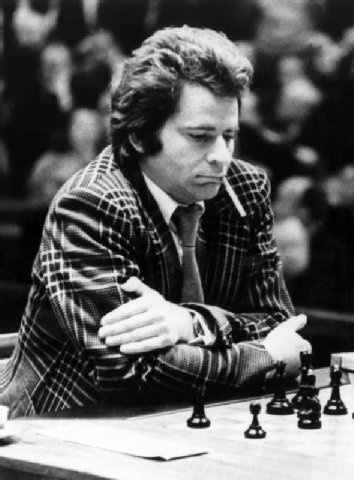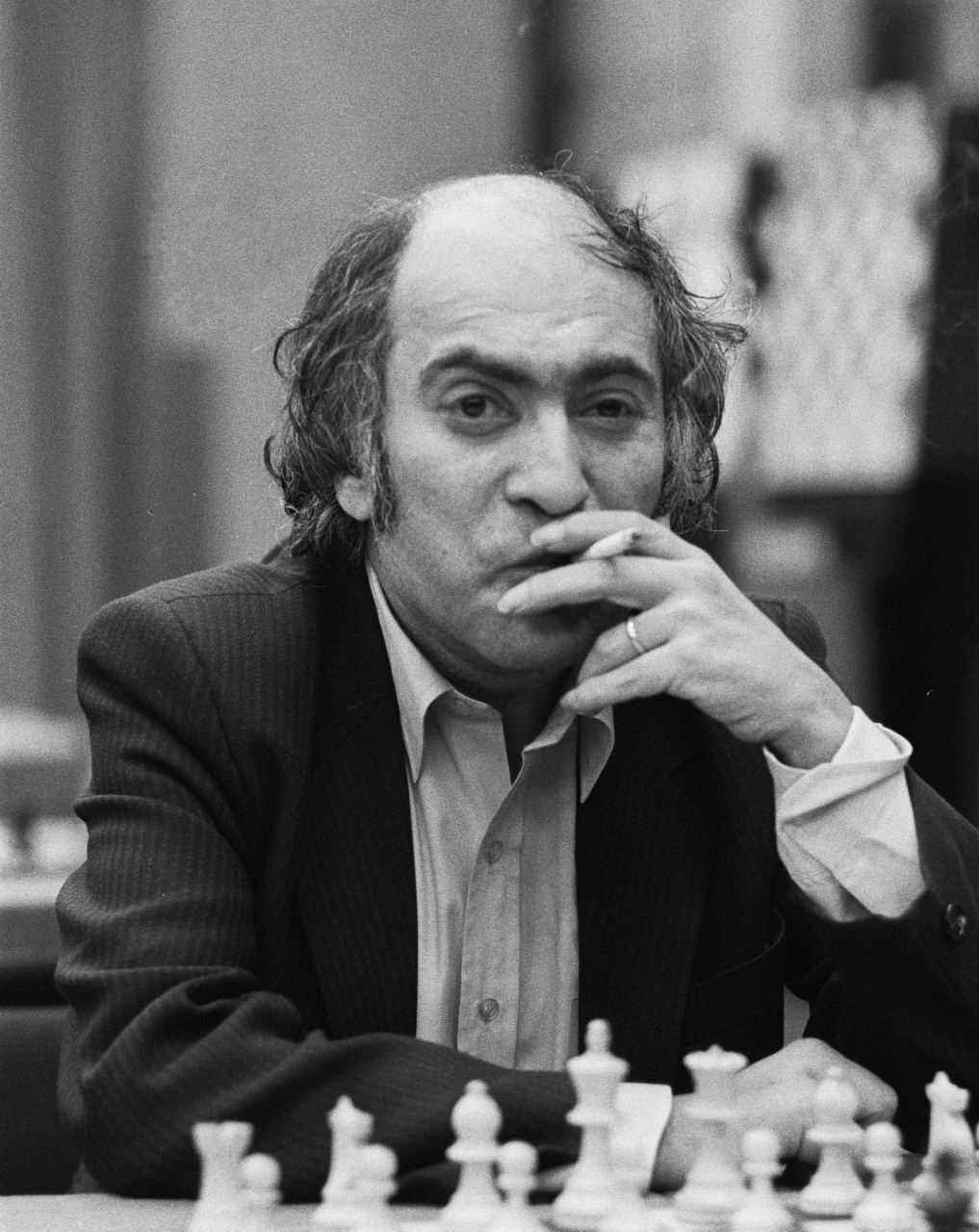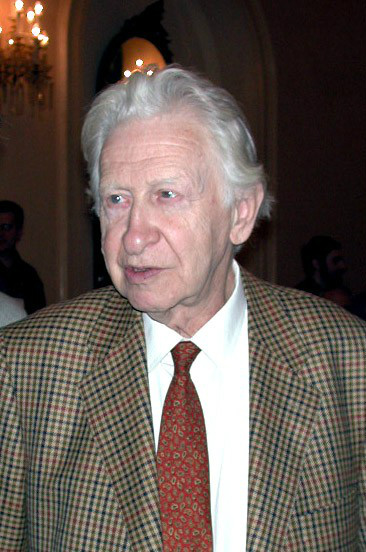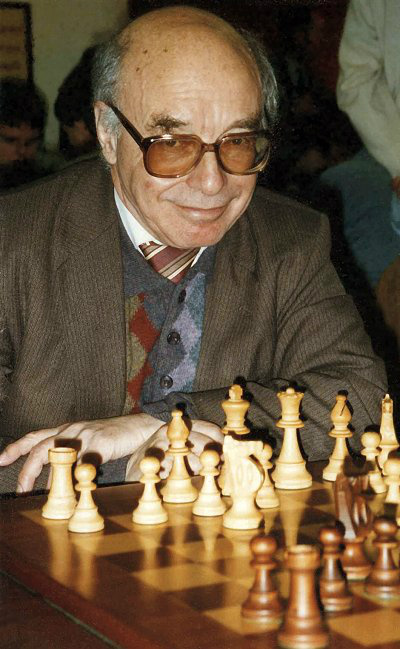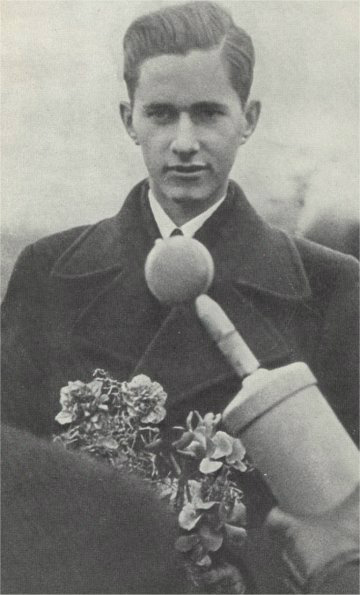Hastings Chess Congress (1st 1920/21, 95th 2019/20) plus Summer Congresses 1895, 1919, 1922, and 1995
-
The famous Hastings International Chess Congress is an annual chess event which takes place in the historic town Hastings, England, around the turn of the year, that's why it is often called Winter or Christmas Congress.
Hastings has been going on for three different centuries! - The Hastings inauguration chess tournament
in 1895, also called Hastings Summer Congress, was a round-robin tournament conducted in Hastings, England from August 5 to September 2, 1895. This was arguably the strongest tournament in history at the time it occurred, and is also considered
one of the greatest tournaments ever in the history of chess. Hastings 1895 was one of the first tournaments to include all the top players, including former World Champion Wilhelm
Steinitz and current champion Emanuel Lasker, Mikhail Chigorin, Siegbert Tarrasch, Karl Schlechter, Joseph
Henry Blackburne, David Janowski, and others. The final result of the 22-game round-robin was a big surprise, as young American Harry
Nelson Pillsbury won with 16.5 points out of 21 points – ahead of Mikhail Chigorin and world
champion Emanuel Lasker – despite playing in his first international tournament.
-
The Hastings 1919 "Victory Tournament" was the first international tournament held in an allied country after World War I. The field was chiefly British, but the tournament was dominated by Cuban José Raúl Capablanca (soon to be World Champion) and Yugoslav grandmaster Borislav Kostić. Capablanca won 10.5/11 without a loss, drawing only his game to Kostić who placed second with 9.5. George Alan Thomas and Frederick Yates tied for 3rd-4th with 7 points.
-
The four "Summer Congress" events (1895, 1919, 1922, and the hundred years jubilee Open in 1995) are kept separate from the annual Winter (Christmas) Congress Hastings events, beginning in 1920/21. There was no tournament during the World War II in 1940/41, 1941/42, 1942/43, 1943/44, and 1944/45.
-
The main event at the Congresses is the Hastings Premier tournament, which was traditionally an invitation 10 to 16 player round-robin tournament, sometimes with an additional Amateur Open, a youth, senior or women section and other events. In 2004/05 the premium tournament was played in the knock out format; since 2005/06 Hastings is played as an Open using the swiss system.
-
Today the series has lost somehow its status as a super-tournament, but from its renowned inauguration event in 1895, the following Summer Congresses in 1919 and 1922, in the 1930s and the 1950s up to the 1970s, Hastings was an absolute MUST for every top player.
-
The Hastings International Chess Congress (HICC) welcomed for the edition of 2015/16 Tradewise Insurance Services as a new sponsor, in conjunction with Hastings Borough Council and the English Chess Federation. Thanks also go to the other stalwart supporters, The White Rock Hotel, The Lansdowne Hotel, KC Computers, and The John Robinson Trust whose sponsorship is all vital to the event. Though Hastings has a proud history, the organisers now hope that this new sponsorship of Tradewise will turn the focus to a bright new future and the next event will prove to be the start of a regenerated Hastings Congress. Tradewise is synonymous with the Gibraltar Festival and this is a hard act to live up to.
-
The winner of the Hastings Masters, the main section, will hold the Golombek Trophy in name for one year.
-
First winner at Hastings ever was Harry Nelson Pillsbury in the legendary summer chess congress event in 1895. The first winner of the annually played year-end winter (Christmas) event that we know today was Frederick Yates in 1920/21.
- Recent winners: In 2017/18, Indian GM Deep Sengupta and Chinese IM Yiping Lou, having both
a final score of 7 points. They shared the first prize – each receiving £1,600 and being jointly awarded the Golombek Trophy by Cllr. Judy Rogers, Mayor of Hastings and Dominic Lawson, President of the English Chess Federation. It is Sengupta's
third Hastings title. The edition of 2018/19 ended in a six-way tie, with GM Oleg Korneev (representing Spain), one of the most active grandmasters of the world, as first on tie-break.
- Hastings has always been a proving ground for young talents, too. In 2016/2017, it was Ramesh Praggnanandhaa, at eleven years the youngest ever International Master, who claimed attention. The Indian prodigy remained unbeaten, recovered strongly to win from a dubious position in the final round, scored 6½/9 and finished with joint second prize, just half a point behind his countryman Deep Sengupta who then won as clear first. It was Praggna's best performance yet and showed clear grandmaster potential (Leonard Barden in The Guardian).
Vera Menchik
Vera Menchik (Czechoslovakia), who was then the Women's World Champion, was the first woman to play in the Premier section, participating in several tournaments from 1929/30 through 1936/37.
Vera Menchik (16 February 1906 – 27 June 1944) was a British-Czech chess player who gained renown as the world's first women's chess champion. She also competed in chess tournaments with some of the world's leading male chess masters, defeating many of them, including future World Champion Max Euwe.
In 1944, during one of the last German air attacks on London, the 38-year-old Vera, who was widowed the previous year, still holding the title of women's world champion, her sister Olga, and their mother were killed in a V-1 flying bomb attack which destroyed their home in the Clapham area of South London. (Source: Wikipedia)
Judit Polgar
Judit Polgar (born in 1976), hungarian chess prodigy, about 25 years female number one and entering the male top ten. Judit Polgar retired from competitive chess at age in 2014 (picture from 1994)
In 1963/64 Nona Gaprindashvili (USSR) won the Hastings Challengers when she also was Women's World Champion, earning a spot in the next years Premier section. In the 1964/65 Premier she scored 5/9 to place fifth, beating all of the British masters in the tournament.
Judit Polgár is the first (and only) woman to win the Hastings Premier, she was triumphator together with Evgeny Bareev (USSR) at Hastings International Chess Congress in 1992/93. Previously, Judit Polgar claimed already the Challengers section as clear first, played as an Open at Hastings in 1988/89, twelve and a half years young!
Btw.: Judit Polgar is also the only woman to be clear runner-up at Wijk aan Zee, in 2003, half a point and unbeaten behind winner Anand (for more, see under Wijk aan Zee tournament).
Wilhelm Steinitz and his followers
Wilhelm Steinitz, born 1836 in the Jewish ghetto of Prague (now capital of the Czech Republic; then in Bohemia, a part of the Austrian Empire), died 1900 in New York. The Austrian and later American chess player became the first undisputed World Chess Champion from 1886 to 1894. He was sole fifth at first Hastings Chess Congress in summer 1895 behind winner Harry Pillbury, second Mikhail Chigorin, third Emanuel Lasker, and fourth Siegbert Tarrasch
Every World Chess Champion before Kasparov except Fischer played at Hastings Congresses:
Wilhelm Steinitz (Summer Congress 1895), Emanuel Lasker (Summer Congress 1895), José Raúl Capablanca (Summer Congress
1919, 1929/30, 1930/1 and 1934/5), Alexander Alekhine (Summer Congress 1922, 1925/26, 1933/34 and 1936/37), Max
Euwe (1923/44, 1930/31, 1931/32, 1934/35, 1945/36 and 1949/50), Mikhail Botvinnik (1934/35, 1961/62 and 1966/67), Vasily
Smyslov (1954/55, 1962/63 and 1968/99), Mikhail Tal (1963/64), Tigran Petrosian (1977/78), Boris Spassky (1965/66), and Anatoly Karpov (1971/72).
Emanuel Lasker
Emanuel Lasker, born 1868 at Berlinchen in Neumark, Prussia (now Barlinek in Poland), died 1941 in New York. The son of a Jewish cantor became the second undisputed World Chess Champion from 1884 to 1921. He was sole third at first Hastings Chess Congress in summer 1895, behind winner Harry Pillbury and clear runner-up Mikhail Chigorin
Champions to play the Congress while currently holding the title were Emanuel Lasker at Hastings 1895 Summer Congress (won by Harry Nelson Pillsbury) and Alexander Alekhine at the 1933/34 Winter Christmas Congress (won by Salo Flohr).
Alekhine had already won the Summer Congress of 1922 and won Hastings Christmas at two other occasions. Lasker as well as Steinitz only played the first Hastings Congress in 1895.
In chess history there are only a few individuals that stand out really among the rest, Akiba Rubinstein, winner at Hastings in 1922/23 is one of these player. He was scheduled to play a match with Emanuel Lasker for the World Chess Championship in 1914, but it was cancelled because of the lack of fundraising success and the outbreak of World War I.
Akiba Kiwelowicz Rubinstein (born 1880 – died March 1961) was a Polish chess Grandmaster at the beginning of the 20th century. Rubinstein was Jewish and his family planned for him to become a rabbi. However, in 1903, after finishing fifth in a tournament in Kiev, Rubinstein decided to abandon his rabbinical studies and devote himself entirely to chess. Between 1907 and 1914, Rubinstein established himself as one of the top leading players in the world.
In 1912, Rubinstein won five chess tournaments in a row in the same year: San Sebastián (ahead of joint Nimzowitsch and Spielmann in a very strong field), Bad Pistyan (Piešťany), Breslau (DSB Congress) shared with Oldřich Duras, Vilnius (All-Russian Masters), and Warsaw (City Championship 1911/12) at the beginning of this incredible consecutive string! A growing demand for there to be a match between Rubinstein and Lasker emerged.
But at St. Petersburg 1914, Rubinstein faced a poor result. The top five played a final and are reported to be given virtually the title of “Grandmaster” (not to mix with the FIDE titles). Rubinstein surprisingly did not qualify for that final (with Lasker, Capablanaca, Alekhine, Marshall and Tarrasch).
At the time when it was common for the reigning world champion to handpick his challengers, Rubinstein was never given a chance to play Lasker for the world chess championship because he was unable to raise enough money to meet Lasker's financial demands. Unfortunately due that bad result at St. Petersburg, the beginning of Rubinstein’s deep psychological problems and the rise of the Cuban chess star Capablanca combined with the break out of World War I was the beginning of the end for Rubinstein title aspirations.
After 1932, Rubinstein who was awarded the official grandmaster title at its inauguration in 1950, never competed in chess tournaments again, all though he was invited to do so. Shortly after his retirement from chess, Akiba checked into a psychiatric clinic. The final years of his life he spent in Belgium with his family until his death in 1961.
Historical Ratings from Chessmetrics are placing Rubinstein between mid-1912 and mid-1914 as world no. 1
(Source: Wikipedia)
Albo d' Oro
Five and most tournament wins at Hastings (alone or tied) scored Svetozar Gligorić (1951/52, 1956/57 shared, 1959/60, 1960/61, and 1962/63 shared).
Four wins at Hastings realized Salo Flohr (consecutively in 1931/32, 1932/33, 1933/34, and 1934/35 shared), Savielly Tartakower (1924/25 shared, 1926/27, 1927/28, and 1945/46), and László Szabó (1938/39, 1947/48, 1949/50, and 1973/74 shared), who also holds at Hastings International Chess Congress the longest winning span, with a stretch of incredible 35 years!
Three wins for Alexander Alekhine (including the summer congress in 1922), Max Euwe, Wolfgang Uhlmann, Bent Larsen, Vlastimil Hort, Ulf Andersson, Evgeny Bareev (always in closed editions), as well as in the rather recent swiss system years Valery Neverov, Deep Sengupta, and Mark Hebden (contrary to the other thrice-winners, he had all shared, including one closed co-win).
Further congress winners with one or two wins – among many others –
Yates, Kostic, Capablanca (twice-winner including the summer congress 1919), Rubinstein, Marshall, Vidmar, Maroczy, Colle,
Thomas, Rossolimo, Fine, Reshevsky, C.H.O'D. Alexander, Unzicker, Keres, Botvinnik, Kotov, Bronstein,
Golombek, Penrose, Parr, Yanofsky, Korchnoi, Smyslov, Tal, Spassky, F. Olafsson, Suetin,
Stein, Kuzmin, Portisch, Hort, Karpov, Timman, Gheorghiu, Sveshnikov, Kupreichik, Romanishin,
Vaganian, Short, Chandler, Nunn, Speelman, Conquest, Lputian, Lalic, Dzindzichashvili, Dolmatov,
Sutovsky, Petursson, Istratescu, Kotronias, Nielsen, Luther, Barsov, Khenkin, Sasikiran, Harikrishna,
I. Sokolov, Khalifman, Rozentalis, Romain, Rowson, Sadler, Howell, Jones, Wang Yue, Kurnosov,
and Judit Polgar (1992/93 shared), and Atalik (1995 summer congress 100-year jubilee), and Pillsbury (clear first of the super-strong tournament at Hastings summer congress in 1895).
Great chess players also competing, but <not winning> at Hastings: Steinitz (summer 1895), Lasker (summer 1895), Chigorin (summer 1895), Tarrasch (summer 1895), Schlechter (summer 1895),
Bogoljubov (summer 1922), Réti, Kmoch, Sultan Khan, Vera Menchik, Lilienthal, Eliskases, Winter, Koltanowski, Pirc, Prins, O'Kelly de Galway, Najdorf, Benkö, Pachman, Ivkov, Barden, Wade, Hartston, Browne, Hübner, Miles, Keene,
Stean, Botterill, Basman, Mestel, Flear, Mecking, Sosonko, Seirawan, Sax, Adorjan, Csom, Ftacnik, Gulko, Psakhis, Yusupov, Beliavsky, Nikolic, Torre, Spraggett, Webb, Wells, Adams, Hodgson, Plaskett, Gallagher, McShane, Gormally, Williams, Karjakin, and Maia
Chiburdanidze, Pia Cramling, Xie Jun, Alexandra Kosteniuk, Taimanov, Averbakh, and former World Chess Champion Petrosian.
Nimzowitsch, as well as Fischer, Kasparov, Kramnik, Anand, and Carlsen did never take part.
Viktor Korchnoi played four times and won twice at Hastings, at his very first participation in 1955/56 shared with Fridrik Olafsson (Island) ahead of Borislav Ivkov (Yugoslavia), followed by Mark Taimanov (USSR) and at his second participation in 1970/71 together with Anatoly Karpov (USSR) - with Korchnoi winning their direct encounter - ahead of brazilian prodigy Henrique Mecking, shared together with Robert Byrne (USA), followed by Svetozar Gligoric (Yugoslavia) and Miguel Najdorf (Argentina).
In 1975/76, Korchnoi was fourth behind the three joint winners David Bronstein (USSR), Vlastimil Hort (CSR), and Wolfgang Uhlmann (GDR), ahead of Mark Taimanov (USSR), with a bunch of young and promising brits competing for the first english origin grandmaster title, among them Tony Miles, who won that race, Keene, Stean, Nunn and Hartston. In 1988/89, Viktor Korchnoi was runner-up behind Nigel Short (England), ahead of shared third Jonathan Speelman (England), Boris Gulko (then USA, emigrated from USSR), Vasily Smyslov (USSR), and followed by Bent Larsen (Denmark).
Viktor Korchnoi earned the grandmaster title by FIDE after winning Hastings in 1955/56, it was his very first individual chess tournament abroad eastern countries and only the second individual tournament abroad after being clear first at Bucharest in 1954, subsequently earning the IM title. There was no ELO metrics, and the grandmaster title, in its inauguration 1950 donated to 27 players (half of them due to historical achievements), was restricted to absolute elite players, until the 1970s there were far less than 100 Chess Grandmasters worldwide alive.
This event is by far the longest major recurring international classical chess tournament in annually tradition still existing.
Hastings
Hastings International Chess Congress (Wikipedia)
The Hastings International Chess Congress (Tournament homepage)
http://www.endgame.nl/hastings.htm (Survey by Jan van Reek, inactive)
http://kenilworthian.blogspot.ch/2013/01/hastings-and-chess-history.html (Blog)
László Szabó (1917 - 1998), born in Budapest, he was tutored by Géza Maróczy, both becoming international grandmaster of chess in 1950, at its title inauguration by FIDE, as first hungarian chess players ever.
Szabó learned to play the game at the age of six, at age of 14 he began to take part in chess tournaments, at 17 he became a National Master and he became at 18 Champion of Hungary. Szabó was nine times national Hungarian Champion between 1935 and 1967/68.
Szabó was a three times consecutive Candidate during the 1950s, at Budapest in 1950, at Zürich / Neuhausen in 1953 and equal third at Amsterdam in 1956 (with the four soviet players Spassky, Petrosian, Bronstein, Geller; behind runner-up Keres and winner Smyslov).
Szabó represented Hungary at 11 Chess Olympiads, playing first board on five occasions and delivering many medal-winning performances, plus the unofficial Chess Olympiad at Munich in 1936, winning Gold both for Hungary as team and individual board prize. He also participated seven times in the European Team Championships.
He won top-class tournaments from the mid-1930s into the mid-1970s, a stretch of 40 years, winning Hastings four times and maintaining the longest winning span at Hastings, incredible thirty-five years (!) from 1938/39 to 1973/74.
László Szabó burst onto the international chess scene in 1935, at the age of 18, winning his first Hungarian Championships, an international tournament in Tatatóváros 1935, and subsequently was selected to represent his country at the 1935 Warsaw Olympiad.
His finest results are the mentioned four Hastings Congresses 1938/39, 1947/48, 1949/50 (all three outright), 1973/74 (shared, best on tie-break), and amongst others Vienna (Schlechter Memorial) 1947 outright, Budapest 1948 (clear first with 1.5 points ahead of Gligoric), Venice 1949 (clear first ahead of the european elite players Rossolimo, Prins, Gligoric, Golombek, Barcza, Foltys, Paoli, Kottnauer, Tartakower, etc.), Santa Fé 1960 (best on tie-break, joint with Taimanov, ahead of Gligoric, Korchnoi, 8 players), Zagreb 1964 outright, (again) in Budapest 1965 (with Taimanov and Polugaevsky). More was to come:
Szabo also won in the mid-1970s days at Sarajevo, Bosna in 1972 (clear first ahead of Tigran Petrosian!, followed by Paul Keres, Vlastimil Hort, and Vlastimil Jansa as joint third), a prominent win at age of 55, at Hilversum, 2nd AVRO in 1973 (shared with Efim Geller, ahead of Ljubojevic, Andersson, Sax, Ivkov, Polugaevsky, and Timman, eight players in a double round robin), another big win,
then as already listed, László Szabó's fourth and last Hastings tournament victory in 1973/74 (shared, as best on tie-break), remember, his first Hastings triumph happened in 1938/39,
at Dortmund in 1974 (joint with Ciocâltea in a less strong field with several minor players), at Helsinki in 1975 (joint winner with Hort and Westerinen), at Costa Brava in Sant Feliu de Guixols in 1975 (shared, as best on tie-break), at Kapfenberg in 1976 (ahead of Stean).
He won the strong Wageningen Zonal 1957 unbeaten (ahead of 2. F. Olafsson, 3./4. Larsen, Donner, 5. Uhlmann, 6./7. Trifunovic, Stahlberg, 8. Teschner, 9. Ivkov, etc., 18 players).
Szabó was sole second at Beverwijk (Hoogovens) in 1966, half a point behind Polugaevksy.
He was also clear second in the Interzonal at Saltsjöbaden (Stockholm, Sweden) in 1948 with 20 participants, László Szabó held the lead during rounds 7-17, and co-leading after the penultimate round, but in the last round he unexpectedly lost to Erik Lundin who nevertheless placed clear last of the Interzonal, whereas eventual winner David Bronstein defeated Savielly Tartakower, thus Bronstein won the tournament, unbeaten one point ahead of Szabó. The only game Erik Lundin (IM 1950 and Honorary GM 1983) won at all in Saltsjöbaden's Interzonal in 1948, stopped Szabó from co-winning with Bronstein. Of course both players advanced to the following Candidate’s tournament at Budapest in 1950, finally decided in a play-off match between Boleslavsky and Bronstein, the latter winning again and becoming Challenger of Champion Mikhail Botvinnik in 1951, this World Chess Championship was tied 12:12, the reigning king retaining the title (no play-off).
Szabó was already active at highest level before WW II, his first win at Hastings in 1938/39 was ahead of Max Euwe, Salo Landau and Vasja Pirc, his fourth win at Hastings in 1973/74, as shared first with the best tie-break score (co-winners were Mikhail Tal, Jan Timman and Gennadi Kuzmin; this guy was reigning runner-up at the super strong USSR Championship in 1973, together with – alphabetically – Karpov, Korchnoi, Petrosian, and Polugaevsky).
Szabó was the leading player in Hungary for a quarter of a century (eventually being succeeded by Lajos Portisch in the early to mid 1960s), always a lively player at chess events, his style full of underappreciated brilliance though his performance sometimes erratic, Szabó was a longtime player in the range of the top twenty to top ten in the world, and at the peak of his powers best-ranked by chessmetrics (historical ELO) on position 6 in the 1940s.
His family donated Szabó's entire chess library and his papers to the Cleveland Public Library John G. White Chess and Checkers Collection. The John G. White Collection of Chess and Checkers is the largest chess library in the world.
I watched Szabó at the international Max Blau Memorial at Bern in 1987 (Campora and Geller won, ahead of swiss student Giancarlo Franzoni, making his final IM norm, followed by Cebalo, Unzicker, young IM Danny King, today esteemed presenter, and septuagenarian Szabó on seventh place, twelve players in a cozy little generation mix).
The mystery of Salomon Flohr
"Eventually he moved to Prague, where many cafés were filled with chess players. These cafés turned into his chess schools and his job, since he quickly realized that he had an amazing talent for blitz chess. Years passed, he became the monster of the cafés, he made a living from blitz bets, and he learned more and more about the game as time ticked by. This bohemian lifestyle might have gone on forever, if a Czech journalist hadn’t asked Flohr to come with him to a big international tournament (Kissingen) as an assistant, ... when the players would fill a local café to look at their games, he couldn’t resist pointing out new ideas or improvements. Coming across an unknown who had such a deep understanding of chess is almost unheard of, and a buzz was created in the chess community."
Jeremy Silman, IM and chess author on Salomon Flohr in a beautiful article:
http://schach.chess.com/article/view/salo-flohr-and-the-fickle-winds-of-fate
cp. Hort on Flohr: http://en.chessbase.com/post/vlastimil-hort-on-salo-flohr
Salomon Flohr (*1908 - 1983), four times winner at Hastings, consecutively in 1931/32, 1932/33, 1933/34, and 1934/35 shared with Max Euwe and George Alan Thomas (ahead of Capablanca, Lilienthal, and Botvinnik). In the 1930s, Salo Flohr was regarded as one of the strongest players and a possible contender for the title, retrospective chessmetrics peak-ranked him as second best of the World and regular top-ten troughout the 1930s (this picture here shows Salo Flohr much later at Amsterdam in 1963)
Savielly Tartakower (*1887 - 1956), leading Polish and French chess player, leading chess journalist and author of the 1920s and 1930s whose books are popular still today.
Avant-garde of the "Hypermodern School of chess theory", which came to prominence in the 1920s, thanks to him, Aron Nimzowitsch, Richard Réti, Gyula Breyer, or Ernst Grünfeld.
Tartakower won four times at Hastings between 1924/25 (shared with Géza Maróczy) and 1945/46. Tartakower is unforgotten for his sharp wit and aphorisms, eg: "No game was ever won by resigning"
Biography of the first winner at the great Hastings Summer Congress 1895
Harry Nelson Pillsbury (December 5, 1872 – June 17, 1906) was a leading chess player.
At the age of 22, Pillsbury won at Hastings Summer Congress in 1895 one of the strongest chess tournaments ever played - but
his illness and early death prevented him from challenging for the World Chess Championship.
The US Brooklyn chess club sponsored his journey to Europe to play in the Hastings 1895 chess tournament, in which all the greatest players of the time participated. The 22-year-old Pillsbury became a celebrity in the United States and abroad by winning the tournament, finishing sole first, and before reigning world champion Emanuel Lasker on third place (Hastings summer 1895 was Lasker’s first tournament as new World Chess Champion since 1894), dethroned world champion Wilhelm Steinitz, recent challengers Mikhail Chigorin (who was second) and Isidor Gunsberg, and future challengers Siegbert Tarrasch, Carl Schlechter and Dawid Janowski (22 players). Géza Maróczy conquered the Minor Tournament and Lady Thomas prevailed in the Ladies’ Tournament.
The dynamic style that Pillsbury exhibited during the Hastings tournament also helped to popularize the Queen's Gambit during the 1890s. (Source for Pillsbury: Wikipedia)
Contestants at the Hastings 1895 International Chess Congress. Standing: Albin, Schlechter, Janowski, Marco, Blackburne, Maróczy, Schiffers, Gunsberg, Burn, Tinsley. Seated: Vergani, Steinitz, Chigorin, Lasker, Pillsbury, Tarrasch, Mieses, Teichmann. Not present: von Bardeleben, Mason, Tinsley, Walbrodt
Summer Congress 1922; Winter Congress 1934/35
Hastings Summer 1922
1 Alekhine 7½
2 Rubinstein 7
3= Thomas
4½
3= Bogoljubov 4½
5 Tarrasch 4
6 Yates 2½
In September of 1922, the organizers of the Hastings chess congress decided to hold a masters tournament which would pit two English masters against four of the best from the European continent. The participants of the double round robin were Alexander Alekhine, Efim Bogoljubov, Akiba Rubinstein, Siegbert Tarrasch, George Alan Thomas, and Frederick Yates. Alekhine managed to edge out superstar Rubinstein by half a point in the final, winning his most famous game ever against long time rival Bogoljubov.
http://www.chessgames.com/perl/chesscollection?cid=1009868
Hastings Winter 1934/35
1 Euwe
6½ (1.)
1= Thomas 6½ (2.)
1= Flohr 6½
(3.)
4 Capablanca 5½
5 Lilienthal 5
5= Botvinnik 5
7
Michell 4
8 Menchik 3
9 Norman 1½
10 Milner-Barry 1½
The 1934/35 winter festival had probably the strongest Premier group in the history of Christmas Congresses with three former or future World Chess Champions (winner Euwe, Capablanca and Botvinnik), and reigning female World Chess Champion Vera Menchik.
Thomas having the tournament of his life, without a doubt his greatest achievement was this tie for first place at Hastings with Max Euwe and Salomon Flohr, finishing ahead of and defeating both Capablanca and Botvinnik!
His last round opponent was fellow countryman Michell. In almost any other country, the result would have been foreordained: a friendly draw, and Thomas finishes no worse than a tie for first.
But that's not how Sir George Thomas played chess. The game was hard-fought, and Michell emerged victorious. But there was a happy ending; Max Euwe, in a better position against tail-ender Norman, made a sporting gesture of his own by offering a draw and settling for a first-place tie with Thomas and Flohr, who had been hanging around in the background the whole time.
http://www.chessgames.com/perl/chess.pl?tid=79240
José Raoul Capablanca (*1888 - 1942, on the left), winner at the Hastings Winter Christmas Congress of 1929/30 and the Summer Congress of 1919, and Machgielis "Max" Euwe (*1901 - 1981), thrice-winner of the Winter Congresses at Hastings in 1923/24 outright, 1930/31 outright, and in 1934/35 shared with George Alan Thomas and Salo Flohr (ahead of Capablanca, Lilienthal and Botvinnik) in a picture from 1931
Reuben Fine (*1914 - 1993), winner at Hastings in 1935/36 (ahead of Salo Flohr as clear second and Savielly Tartakower). He was an American chess grandmaster, psychologist, university professor, and author of many books on both chess and psychology. He was one of the strongest chess players in the world from the late 1930s into the early 1950s and retrospective no. 1 of the World in historical ELO by chessmetrics.
After Alexander Alekhine’s death, Reuben Fine was offered as one of six players an invitation to the subsequent quadruple World Championship tournament in 1948, but Fine declined to participate! He retired from chess a few years later in order to pursue a career in psychology.
In his foreshortened career, Fine played tournament games against five world champions. He had overall plus scores against Emanuel Lasker, Alexander Alekhine, and Mikhail Botvinnik, and even records against Jose Raul Capablanca and Max Euwe.
Samuel Reshevsky (*1911 - 1992), chess prodigy, for longtime a leading American grandmaster, playing still at very high level into old age. Reshevsky never became a truly professional chess player, he was an accountant by profession, and a well-regarded chess writer. Reshevsky won at Hastings in 1937/38 as clear first ahead 2nd/3rd Conel Hugh Alexander and Paul Keres, followed by 4th/5th Reuben Fine and Salo Flohr (this picture shows Samuel Reshevsky thirty years later during the Candidate match against Viktor Korchnoi at Amsterdam in 1968)
Leonid Stein, joint winner at Hastings in 1967/68. This picture shows him together with then twenty years young Anatoly Karpov, both tied for first place at the super-strong - and seldom played - international Alekhine Memorial at Moscow in 1971 (for Karpov, Junior World Chess Champion 1969, this was his first big adult success). Stein won three USSR Chess Championships in the 1960s (1963, 1965, and 1966), and was among the world's top ten players during that era. He was a highly intuitive, natural player. Stein was considered to be a brilliant attacking genius, emerging situations of disrupted material and strategic balance.
Stein twice qualified in an Interzonal tournament for the next stage as a Candidate but was ruled out the right to advance, because of a FIDE policy then in force which limited the players from any one country to three (obviously only the USSR was concerned), keeping Stein from trying his chances in the fight for the World Championship.
After winning with Tigran Petrosian the prestigious periodical tournament at Las Palmas 1973, and just before the Petropolis Interzonal 1973 started, Leonid Stein passed away abruptly of a heart attack, aged only 38 years. He will be remembered for his attacking mastery. The chess world will never forget him.
Viktor Korchnoi, Vice World Chess Champion from 1975 (de facto) to 1984/85, twice winner at Hastings at his first participation in 1955/56 (shared with Fridrik Olafsson), earning the GM title, and second participation in 1971/72 (shared with Anatoly Karpov). Korchnoi both times was first on tie-break. This picture shows Viktor Lvovich as guest of honour and commentator at the London Chess Classic in December 2011. Photo: ChessBase
David Bronstein is twice-winner at Hastings in 1953/54 (shared with Conel Hugh O'Donel Alexander, an Irish-born British cryptanalyst and chess player, who worked on the German Enigma machine at Bletchley Park during World War II, and was later the head of the cryptanalysis division at GCHQ, the British intelligence and security agency for over twenty years), and in 1975/76 (shared with Vlastimil Hort and Wolfgang Uhlmann). Photo: Rochade Kuppenheim
A true chess magician and poet, Bronstein is regarded as one of most brilliant attackers and chess enthusiasts and inventors, always passionate about the game and its beauty. His legacy is rich, full of pure chess gems.
Bronstein, Vice World Chess Champion from 1951 to 1954, was an energetic player, his creative and unexpected ideas on the board presented a stark contrast to the "chess as science" trend pushed by Botvinnik, the patriarch of the Soviet chess school. And ever the romantic at the board, Bronstein refused to play conservatively.
He tied the World Championship title match against Botvinnik in 1951 with 12:12 each, the latter remaining the crown on a FIDE clause advocated by Botvinnik, stipulating that the reigning world champion has draw odds without any form of a play-off or tie-break decision.
By game 22, Bronstein led by a point and needed just one point from the last two games in order to unseat the champion. For years rumors persisted about why he lost the fateful 23rd game. Some say Soviet authorities pressured him to lose in order to keep Botvinnik, a favorite of the Communist Party leadership, on the throne.
Bronstein has controversially hinted that there was government pressure on him to lose the match. In a 1993 interview he explained that "There was no direct pressure... but... there was the psychological pressure of the environment..." in part caused by his father's "several years in prison" and what he labelled "the marked preference for the institutional Botvinnik." Bronstein concluded that "it seemed to me that winning could seriously harm me, which does not mean that I deliberately lost."
(Source: Chessgames, Chessbase, and Wikipedia)
Paul Keres, thrice-winner at Hastings Christmas Congresses in 1954/55 (shared with Smyslov), in 1957/58 and in 1964/65 outright, and took Beverwijk in 1964 (co-winner Iivo Nei).
Keres narrowly missed a chance at a world championship match on multiple occasions. He won the 1938 AVRO tournament (on tie-break over Reuben Fine, ahead of Botvinnik, Euwe, Reshevsky, Alekhine, Capablanca, and Flohr) which led to negotiations for a title match against champion Alexander Alekhine, but the match never took place due to World War II. After the war Keres was runner-up in the Candidates' Tournament on four consecutive occasions! That's why he was sometimes nicknamed "Paul the Second", "Eternal Second" and "The Crown Prince of Chess". Keres, along with Viktor Korchnoi and Alexander Beliavsky, defeated nine undisputed world chess champions — more than anyone else in history.
Keres won top-class tournaments from the mid-1930s into the mid-1970s, a span of 40 years.
His last major tournament win was Tallinn 1975, ahead of joint Spassky and Fridrik Olafsson, then joint Hort and Bronstein, and Taimanov, just a few months before he died of a heart attack in Helsinki, Finland, at the age of 59 (it is commonly reported that he died on the same date in Vancouver, Canada). His death occurred while returning to his native Estonia from a tournament in Vancouver, which he had won.
The Paul Keres Memorial Tournaments have been held annually mainly in Vancouver and Tallinn ever since.
Over 100,000 people were in attendance at his state funeral in Tallinn, Estonia, where the leaders of Estonia were on guard of honour, and FIDE President Max Euwe, his old friend and rival, was also present.
Paul Keres was the first person best known for playing chess and whose portrait is on a banknote. The five kroons (5 krooni) Estonian banknote bore his face (kroons are replaced by the euro since 2011).
A statue honouring him can be found on Tõnismägi in Tallinn, and a number of chess clubs and festivals are named after him.
In the year 2000, Keres was elected the Estonian Sportsman of the Century (Source: Wikipedia)

